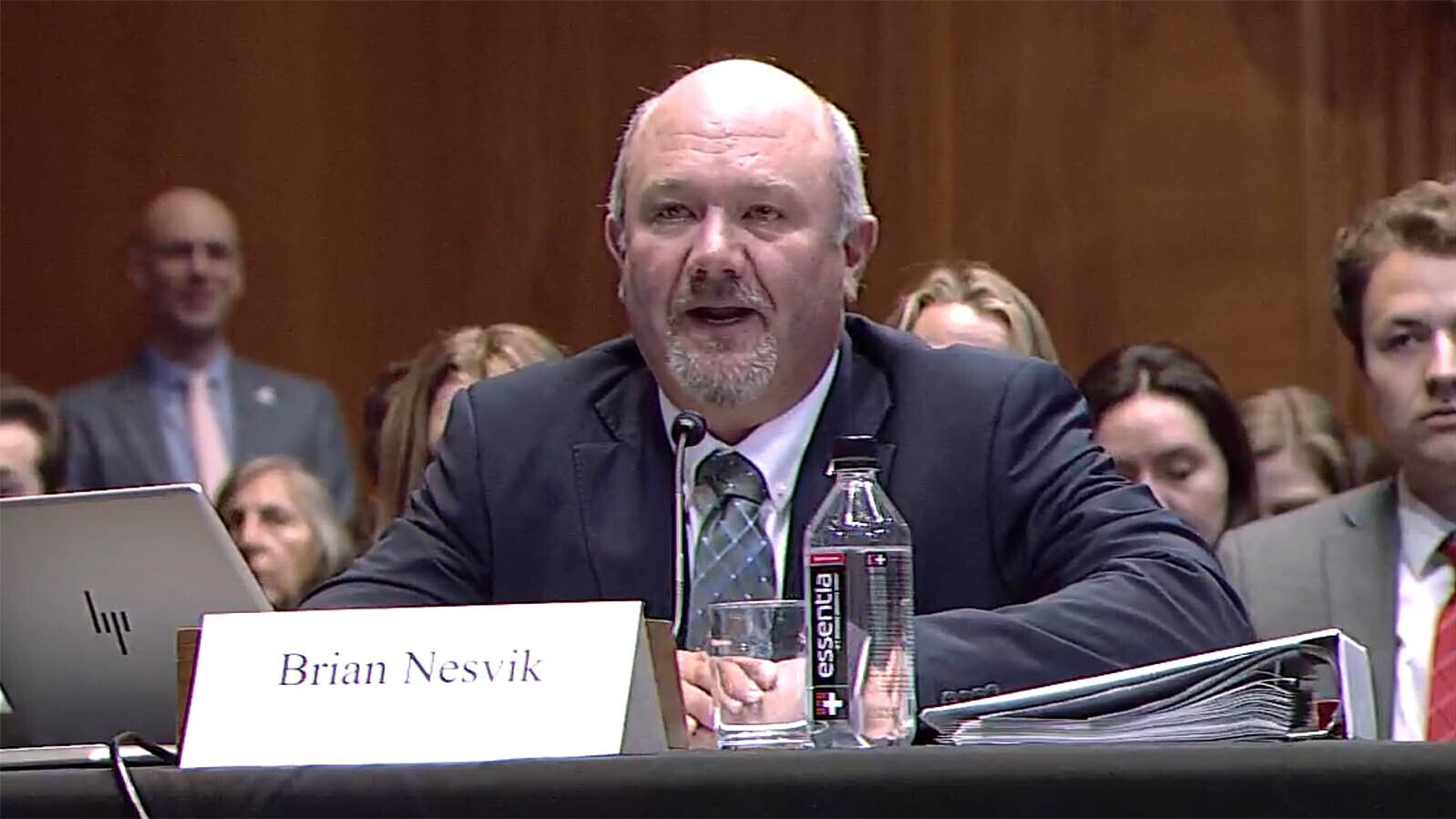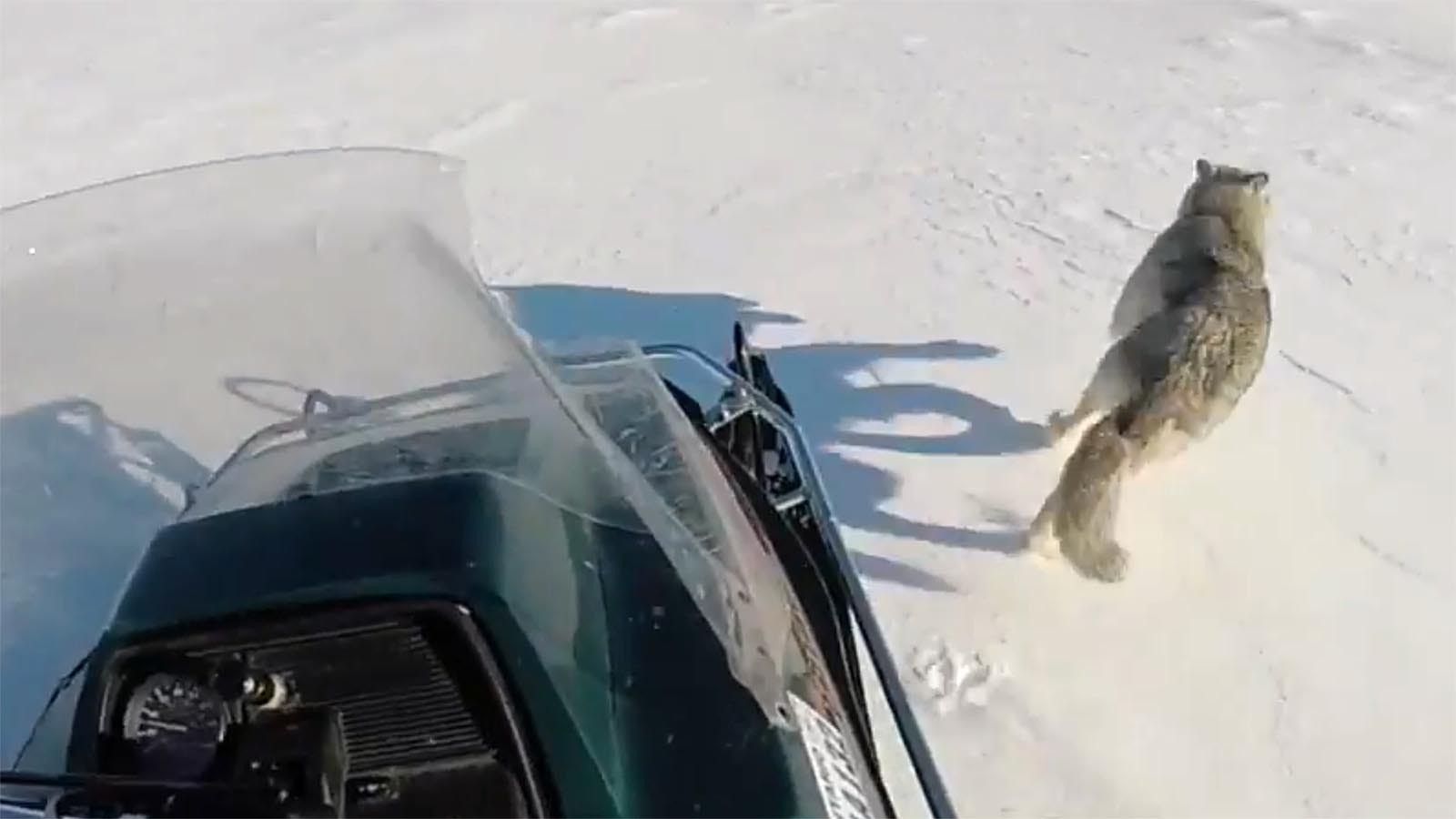Many people driving on the WYO 28 outside of Lander have been awed by the views of Red Canyon, but few have likely taken the time to explore the Red Desert region it is a part of.
Four bikepackers from Lander decided to do just that last spring and their journey can be seen in “Headwinds: Bikepacking the Red Desert,” a new documentary now on Wyoming PBS.
It highlights the joys and challenges of human-powered travel in a remote landscape, as the bikepackers also learn about the desert's history and geology.
“I would say my impression is that a lot of people who have lived in Wyoming for years, or their whole lives, might not be as familiar with the place,” Headwinds director BJ Klophaus said. “Since the film came out, I’ve heard people say, ‘Oh, I've always wanted to go there. I've always heard about it.’
“I think it gets a lot less publicity than the national parks that we have, or some of the big mountain areas, but there's a lot out there, and I think if people knew more about it, they would be really excited to go discover it for themselves.”
Backcountry Adventure
The idea for the documentary came when Lander cyclists Allison Stoff, Bekka Mongeau and Mike Dicken approached Klophaus, who is based in Lander and produces documentaries at Wyoming PBS, early last year.
They explained that they were planning a bikepacking expedition through the Red Desert and asked if he’d be interested in filming it.
The Red Desert is one of the last high-desert ecosystems in North America, according to the National Wildlife Federation. Its varied landscape includes buttes, dunes, sagebrush steppe, mountains and rocky pinnacles.
It is home to the largest living dune system in the United States. It is also home to the largest migratory herd of pronghorn in the lower 48 states, and the world's largest herd of desert elk.
“The Red Desert is such an incredible place; and living in Lander it’s right out our back door,” Mongeau said. “It's easy to get caught up in the idea that an adventure needs to be in a far away or new place; but I love the idea of fully exploring the places close by. Especially here in Wyoming where there is so much public land to recreate on, wildlife to see and interesting spots to check out.
“These trips are of course all the much sweeter when you get to laugh with friends along the way!”
The three also hoped to elevate the enthusiasm for bikepacking in the state and inspire exploration down Wyoming’s backcountry roads. Bikepacking is a form of cycling that combines self-supported backpacking with all-terrain cycling. It involves exploring less-traveled paths like singletrack trails, gravel roads and dirt roads while carrying minimal gear on a bike, often for multiple days.
Mongeau took up the activity in 2022.
“I've been backpacking for a long time and have always loved that experience; but love the opportunity bikepacking provides to see more landscapes and enjoy a different pace,” she said. “I worked with this amazing company called Revelate Designs (builds bikepacking gear) for a couple of years and that only deepened my love for the adventurous nature of bikes!”
Klophaus immediately was onboard with the idea and planning began. The trip would take three days and three nights, beginning in Rock Springs and ending in Atlantic City, a small Wyoming mining settlement. Their route would take them to the Killpecker Sand Dunes, Tri-Territory Site and Honeycomb Buttes.
“We tried to pack in as many iconic Red Desert spots as possible all while being able to refill water at various springs,” Mongeau said. “That was a big uncertainty of the trip – we had to do some pre-trip scouting to make sure we'd have water where the map said it was. The Red Desert is such a changing landscape throughout the year we didn't want to bank on springs that might not be there anymore.”
The three experienced bikepackers were joined by Val Shao, a mountain climber who had gone on a few easy overnight bikepacking trips to the Red Desert with Stoff and Mongeau. She was interested in a more intense trip – traveling more rugged terrain and packing for multiple days. Klophaus said having the less-experienced bikepacker added another level to the film, as people could learn along with the newcomer.
“I think part of it was wanting to explore bikepacking and the Red Desert more, part of it was hanging out with good friends and part of it was just wanting to go on a wild adventure,” she said. “Plus, who wouldn't say yes to seeing BJ in action, behind the camera and director role? That was actually a pretty cool part, being part of a documentary!”
Hitting The Road
The trip occurred in mid-May last year, making weather conditions slightly unpredictable. Things started out well though as the group began with a great tailwind.
“We were practically flying through the Red Desert,” Shao said. “The wind on our faces, the scenery around us and good friends pedaling along was such a treat. Talk about the ‘kid in a candy shop’ moment. It was that feeling of being a kid in the world again, having no sense of stress or responsibility in the world — it was me on a bike full of pure joy!”
The bikepackers did face some challenges including strong headwinds while heading up Steamboat Mountain, and later mud that caked their tires, made riding impossible and forced them to carry their bikes.
“I think for the most part, we were pretty fortunate with what we got,” Klophaus said of the weather. “And I can say as a filmmaker who was riding in a van and not pedaling uphill into the wind or forced to deal with the mud, I was glad that there was some adversity that was presented to the participants. I think it really helps show the true nature of a wild place like the Red Desert.
“As a director and editor, you're always kind of writing the film in your head as you're going along,” he added. “So that was one of the challenges for me was just figuring out, as things were unfolding on the fly, how it would fit into the greater narrative.”
Shao felt the conditions were definitely “a bit rugged” both physically and mentally. Each day it seemed like the group faced a new weather challenge she had to overcome.
“Insane headwinds on the first day made biking — let alone a really steep section of the route — super difficult, a bit scary and nearly impossible for an ‘off the couch’ participant,” she said. “My legs were already a bit sore from the day and the added factor left me a little defeated as I resigned to just pushing my bike up the final hill.
“On the second day, muddy roads made biking absolutely impossible and pretty frustrating. Trying to carry a bike completely loaded with four days worth of stuff was mentally harsh.”
Each night the four relaxed around a campfire, just enjoying each other’s company. Mongeau said it was one of her favorite parts of the journey.
“How do I pick,” she said when asked what she enjoyed the most. “Spending time with friends, laughing around a campfire, being disconnected from my phone, seeing new spots in the desert I hadn't visited yet, riding alongside pronghorn — I can't wait to get back out and try a new route!”
Along with learning more about bikepacking, including to bring more food next time, Shao said she enjoyed learning about the Red Desert from John Mionczynski, a former biologist and Red Desert outfitter, toward the end of their trip.
“I think from talking to John, I really took away the concept of listening more spiritually to the land around us,” she said. “I think it's easy to get caught up in the present world — with technology, social media and societal pressures — and focus on so much that is supposed to make us ‘happy’ or ‘successful.’
“But seeing his set-up, his style of simplicity, his love and passion for the Red Desert and his countless stories about the land really made me want to explore the area and my curiosities about the world.”
Bringing Everything Together
To capture the footage, Klophaus and a cameraman rode alongside the bikepackers in a production van for most of the journey, although there were a few spots that were impassable to the bigger vehicle and required some coordination so they could meet up again.
Once the trip was complete, he and the cameramen spent time gathering B roll and expert interviews to bring everything together. The 30-minute film was officially completed by the end of last year.
“One thing we really like to do in our productions at PBS is make sure there's this educational value to it, so that was where including those expert interviews were really important to me to help people learn and maybe find something that sparks interest about the place for them,” Klophaus said.
The aim of the film is to empower viewers to explore the Red Desert and seek out adventures. It’s also a reminder of the joy and freedom that can come from riding a bike.
“We said it in the beginning of the film while driving on the highway that you don't realize how much is out there,” Klophaus said. “There are so many places like that in Wyoming. In my capacity at Wyoming PBS, I travel a lot around the state to so many places that just spark my curiosity like that. It was so cool to just be able to go explore one of those places a little more in depth.”
The film premiered on Wyoming PBS at the beginning of April.
“I love how it turned out,” Mongeau said. “I appreciate that it showcases the Red Desert and shares what a special place it is by bringing in experts to talk about the various spots along the way and using bikepacking as a means to tell the story. Knowing the historical background to a place only makes a trip that much more interesting.
“I hope it encourages more folks to get out there and explore around on two wheels. Whether it's just for a day or a whole lot more, it's a special place that deserves to be loved and protected.”
“Headwinds: Bikepacking the Red Desert” can be viewed online.









